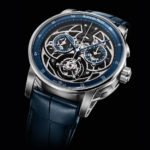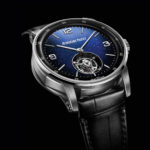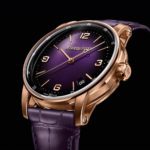Audemars Piguet Introduces the Code 11.59 Grande Sonnerie Carillon Supersonnerie
The pinnacle of striking watches.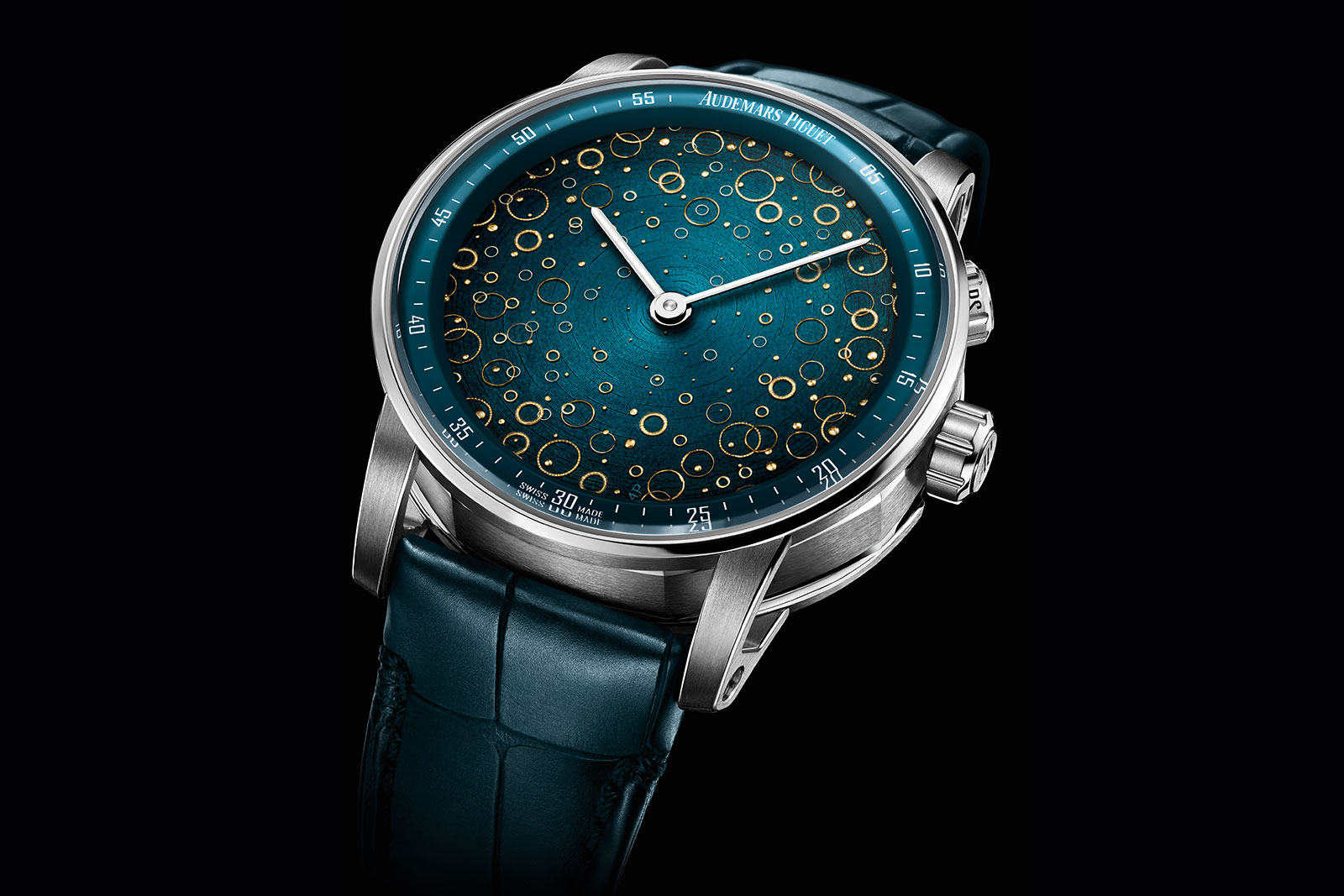
Audemars Piguet has been progressively unveiling increasingly compelling versions of the Code 11.59, starting the year with the smoked-dial models and then following with the tourbillon-chronograph. And now it’s revealed what is no doubt the flagship of the line, the Code 11.59 by Audemars Piguet Grande Sonnerie Carillon Supersonnerie.
Originally slated to have been launched earlier in the year alongside the official opening of the Audemars Piguet Museum but delayed by the pandemic, the Code 11.59 Grande Sonnerie is powered by a movement enhanced with the brand’s Supersonnerie that results in one of the loudest chiming watches on the market.
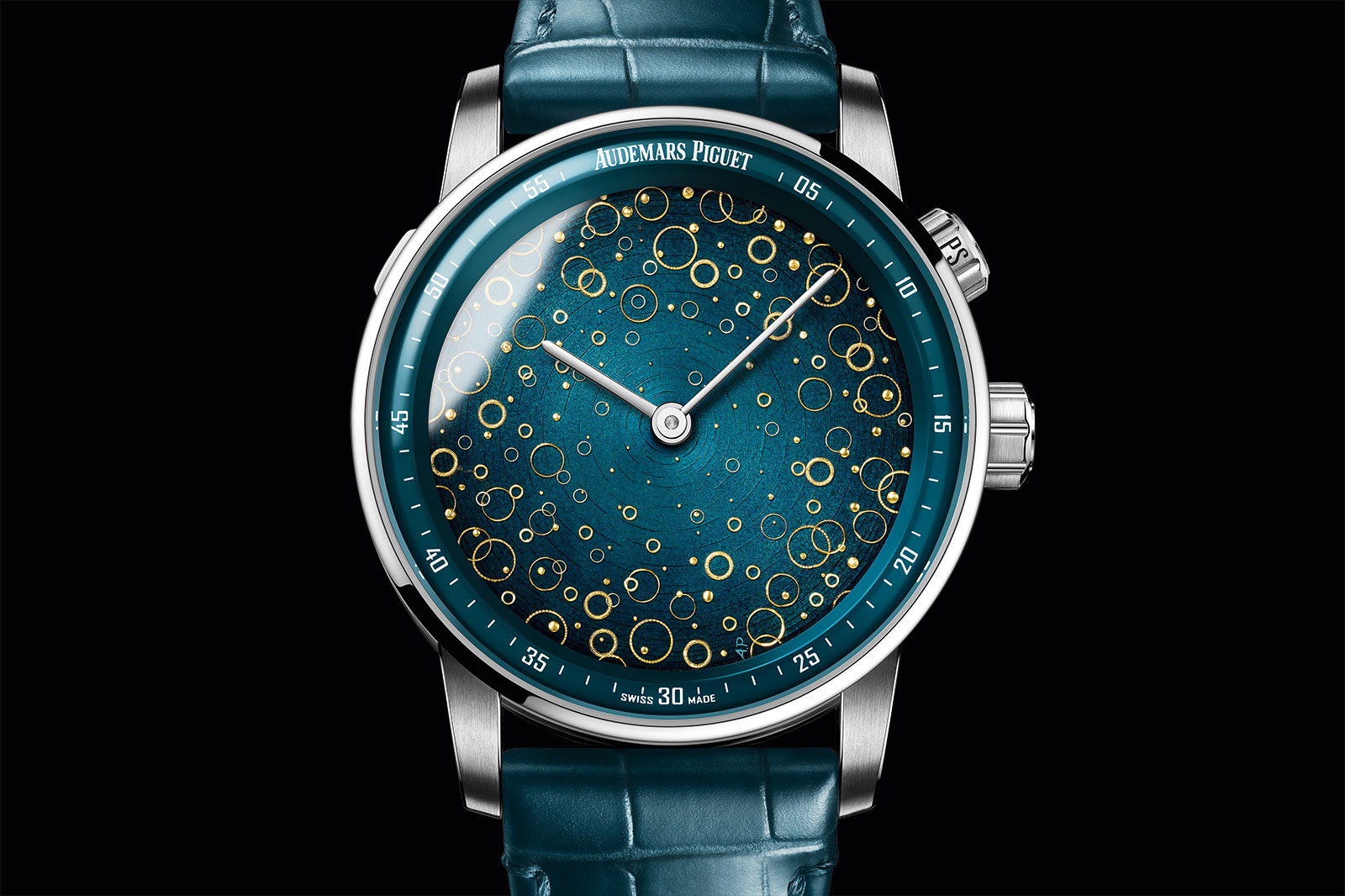
The pusher at 11 o’clock activates the minute repeater, while the crown at two o’clock sets the strike mode – silent, grande or petite sonnerie
Beyond its technical innovation, the new Grande Sonnerie is bestowed with a dial made by Anita Porchet. It’s a limited edition of five watches, with three unique paillonné dials already having been made, while the remaining two dials can be customised by the buyer.

Initial thoughts
The new Code 11.59 Grande Sonnerie is a well-designed watch that is surprisingly simple in style. Like the recent Royal Oak Concept Frosted Gold Flying Tourbillon, the grande sonnerie is strikingly modern, but the paillonné technique used to create the dial is eminently artisanal and classical. The gold paillons are arranged at random, giving the enamel dial a beautiful, almost organic appearance.
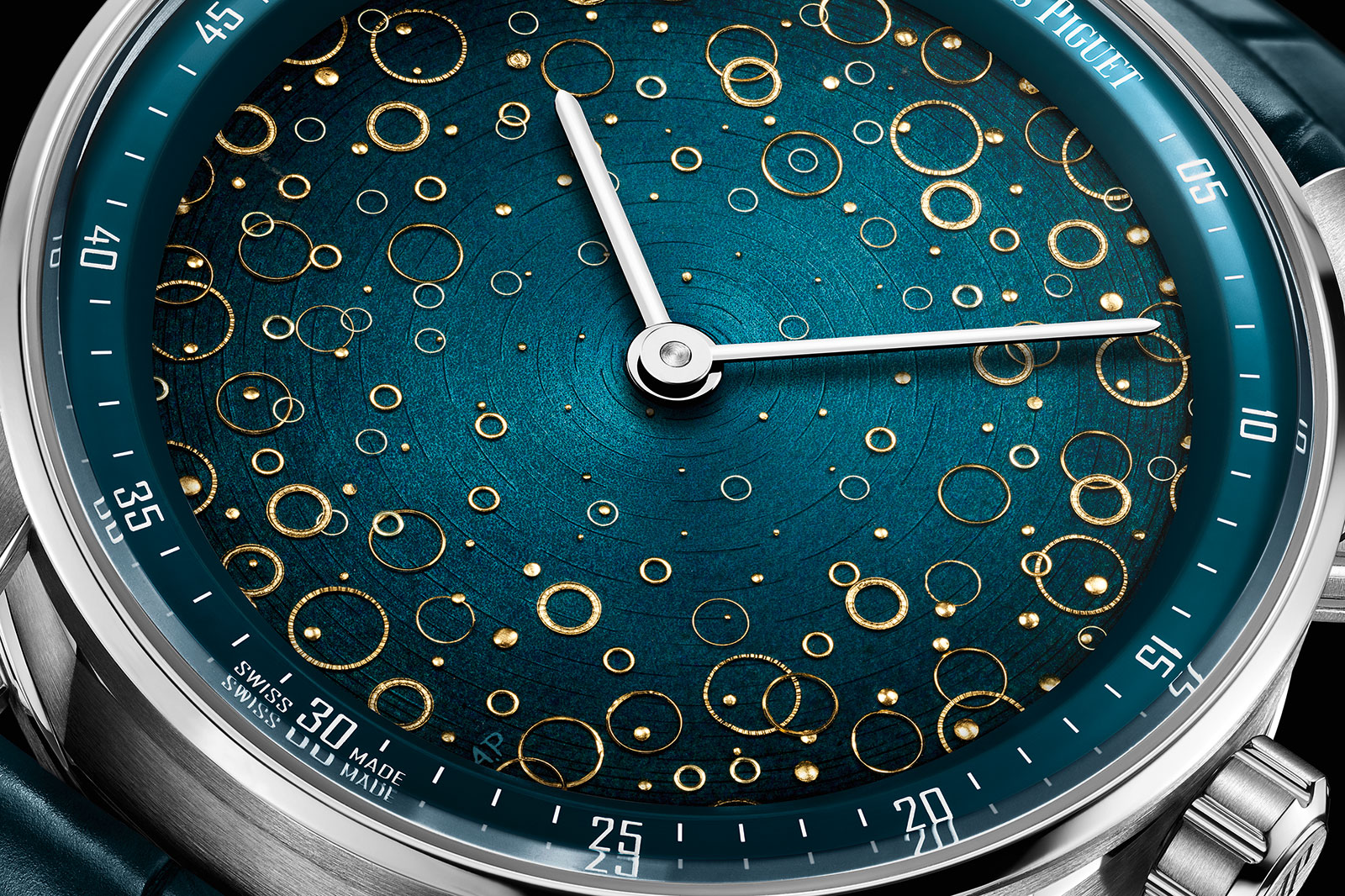
Mechanically it also scores high marks. Although I have not yet heard this in person, the Supersonnerie minute repeater launched several years ago strikes a splendidly loud chime, so this will surely sound similar. The Supersonnerie upgrades to the movement address the weaknesses of the earlier-generation of Audemars Piguet grande sonnerie watches, namely the soft chimes and buzz of the governor.
The fact that the movement inside shares the same architecture as earlier grande sonnerie calibre is worth noting, though not quite a shortcoming since everything that presumably could be improved has been dealt with.
And the grande sonnerie starts at 650,000 Swiss francs, or a bit over US$700,000, which is reasonable as such things go.
The Supersonnerie sonnerie
The new watch is a grande sonnerie carillon with minute repeater – the ultimate striking watch in other words. Grande sonnerie means it can chime the hours and quarters en passant, or as they pass, and it can also chime the hours, quarters, and minutes on demand as a minute repeater.
And it is a carillon, featuring three sets of hammers and gongs, instead of the usual two. So it chimes a high note for each hour, a triple chime for the quarters, and a low note for each remaining minute past the last quarter.
The cal. 2956 is a new movement, but derived from the cal. 2890 (and 2891) that was developed in the mid 1990s. Though the architecture is similar, the cal. 2956 has several obvious upgrades, including a free-sprung balance wheel as well as a more refined barrel bridge.
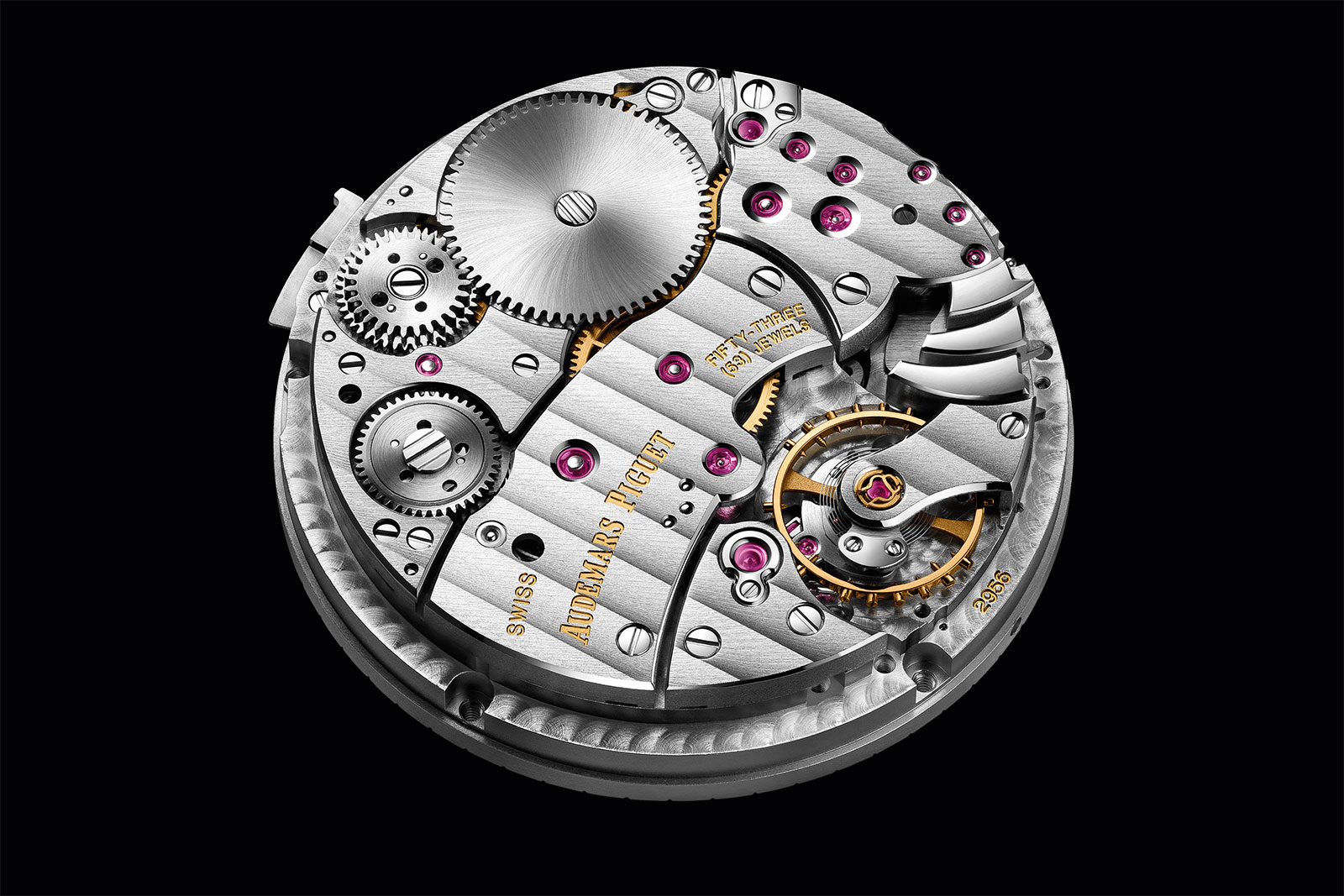
The new cal. 2956
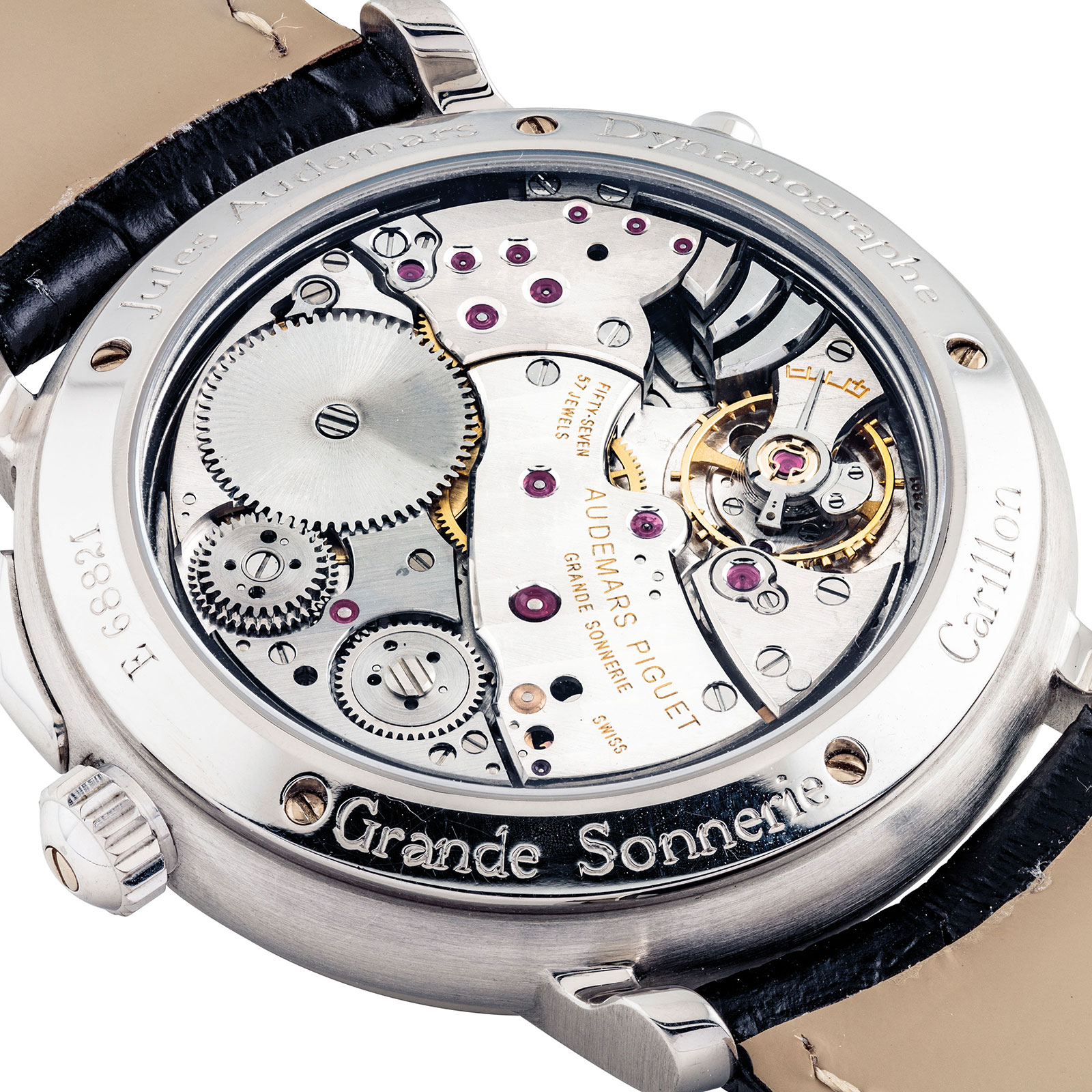
The cal. 2891 in a Jules Audemars Grande and Petite Sonnerie Carillon from the mid 2000s. Photo – Christie’s
Most importantly, the cal. 2956 is equipped with the Supersonnerie, a set of innovations developed by Audemars Piguet to optimise the sound of a striking watch. Supersonnerie is made up of three key elements, the first an improved technique for manufacturing the gongs.
The second, and most obvious on the watch, is the double-walled back that has an outer back with apertures for sound transmission as well as an inner soundboard that’s made of a special, resonating alloy. Instead of being attached to the movement as is convention, the gongs are mounted on the soundboard for a louder chime.
And the last element is the silent governor. A flywheel that regulates the pace of the chiming process, the governor relies on centrifugal force, instead of friction, allowing it to run silently.
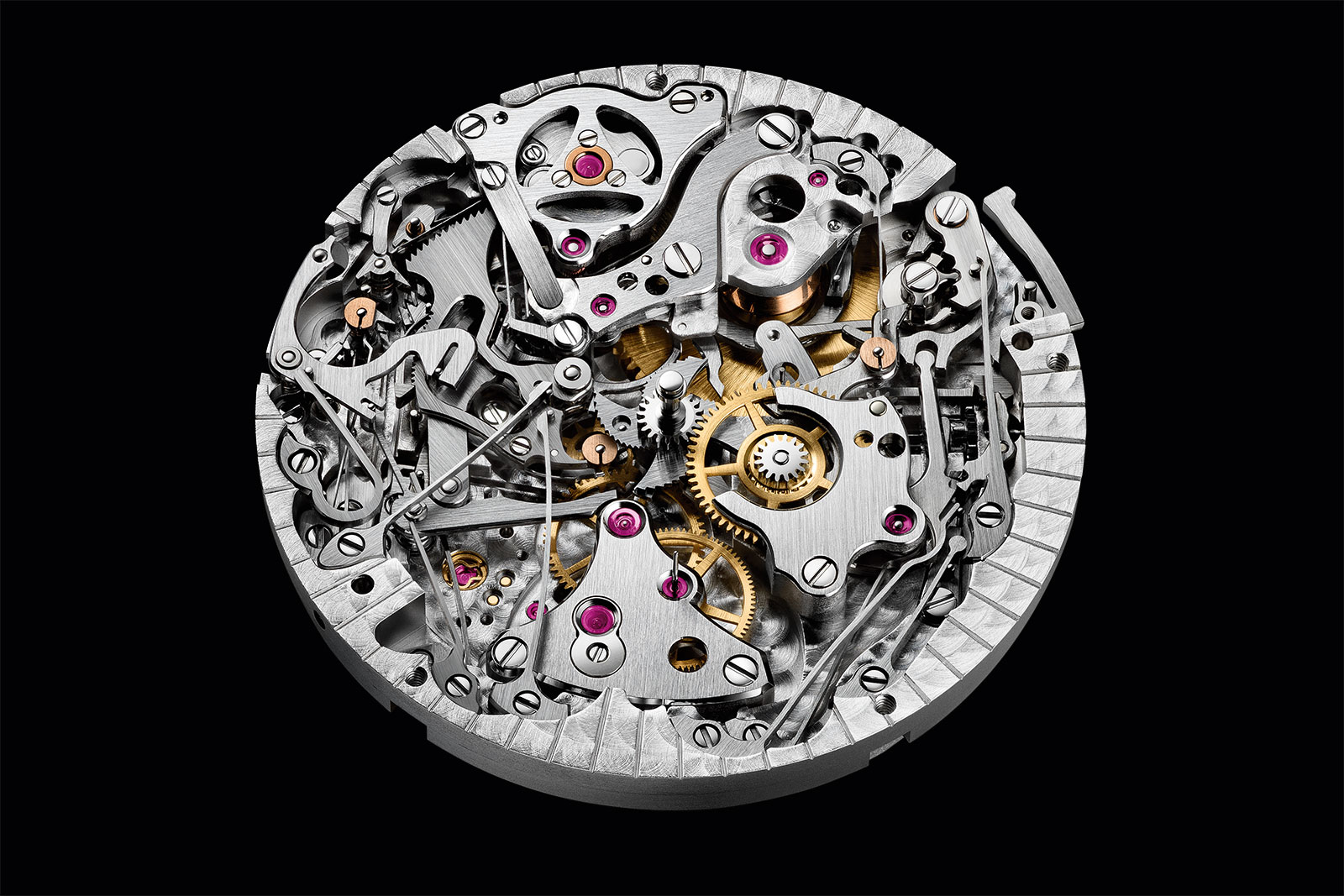
The immensely complex under-the-dial mechanism for the sonnerie and repeater, with the governor visible at 11 o’clock
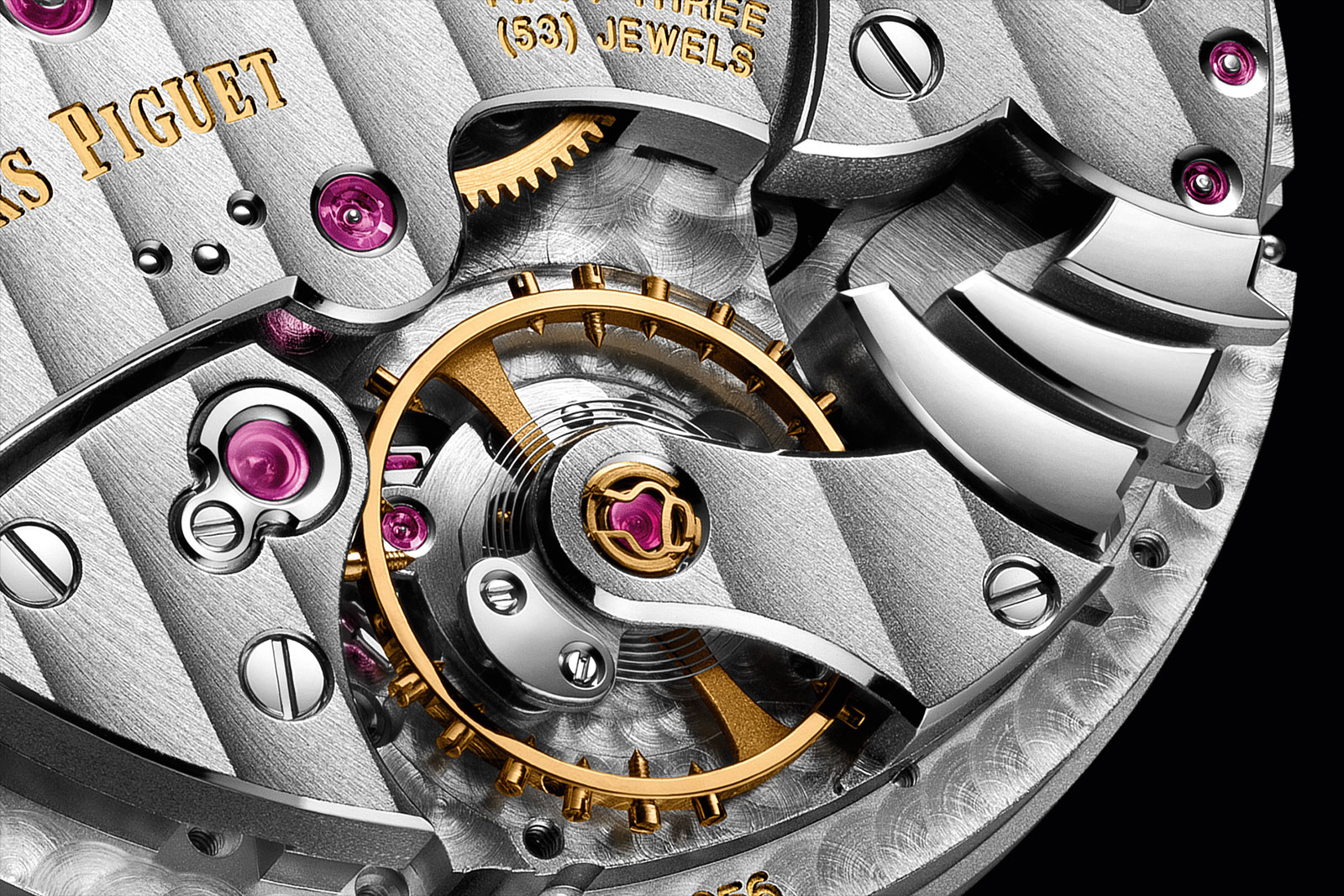
The free-sprung balance in the 2896, next to the three hammers of the carillon
Paillons
The dial of the Code 11.59 Grande Sonnerie is made by the workshop of Anita Porchet, arguably the leading enameller in watchmaking, and certainly the most famous. Interestingly, this is the first time Ms Porchet is producing dials for Audemars Piguet, but the result of the partnership is both interesting and impressive.

Three dials have been produced, and each is unique. They are all decorated with the paillonné technique, which involves applying tiny, antique gold spangles, or paillons – each cut by hand from a piece of gold foil and over 100 years old – to the enamel dial before applying translucent enamel over the paillons.

Grinding the enamel into powder and mixing it into a solution to be painted on the dial
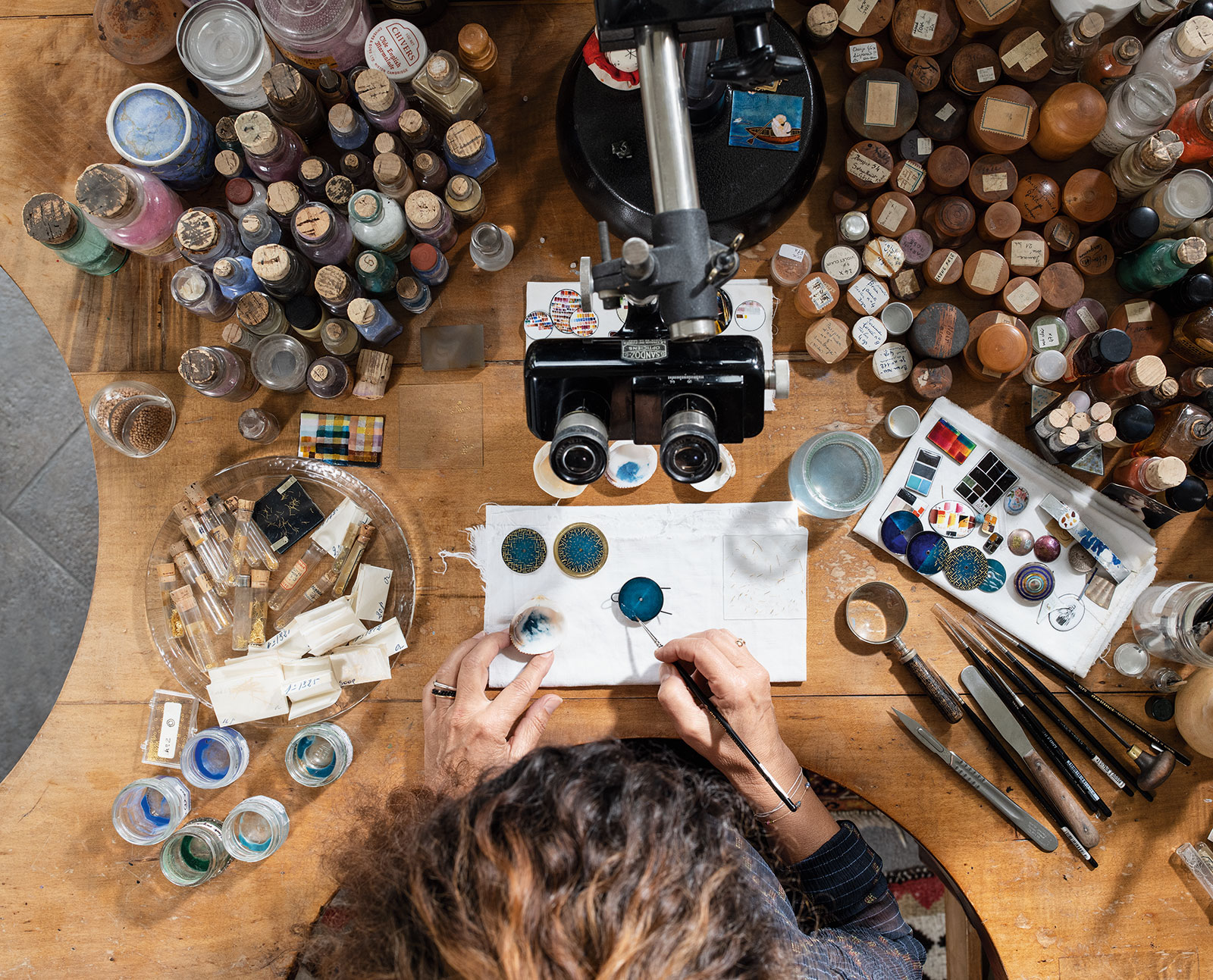
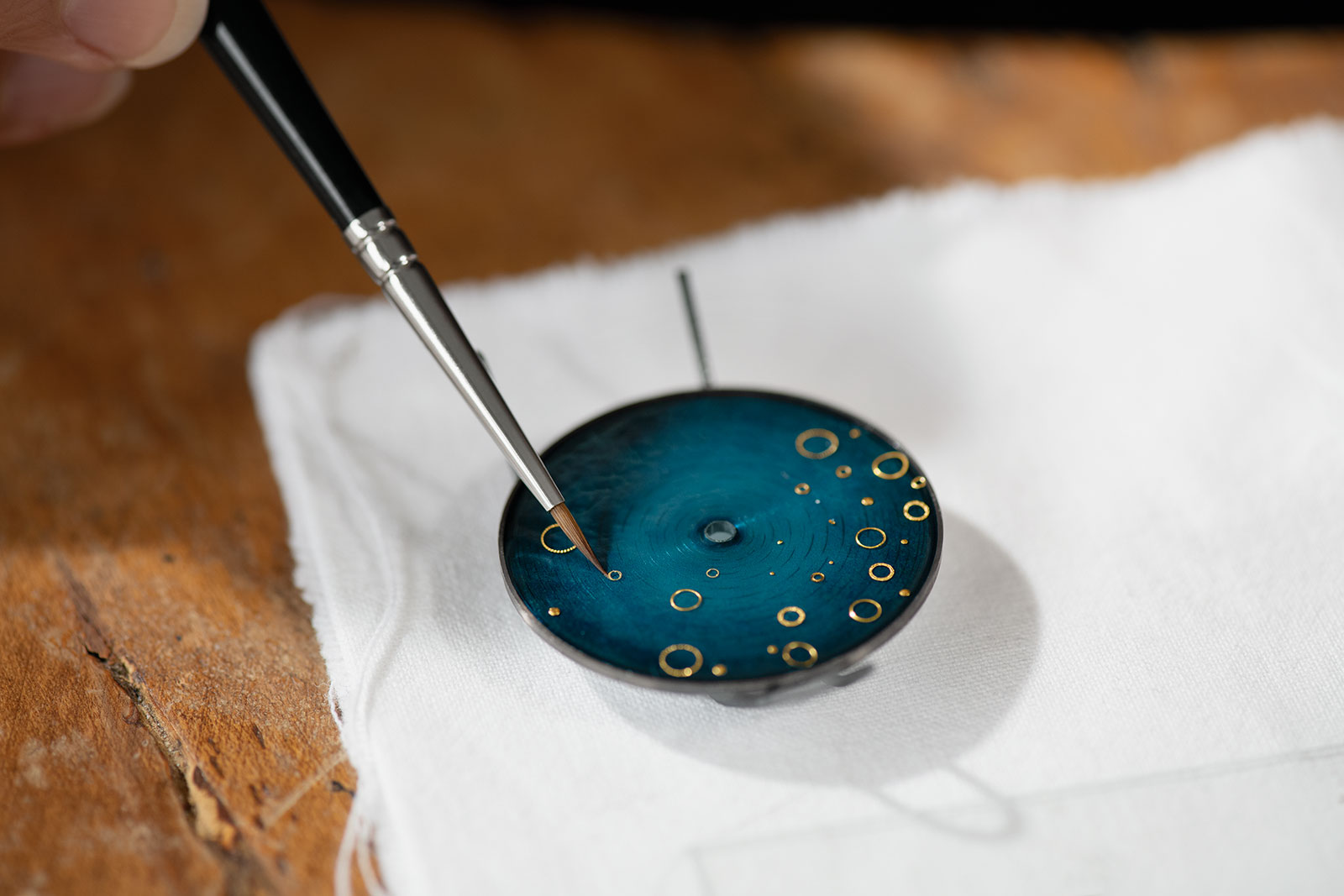
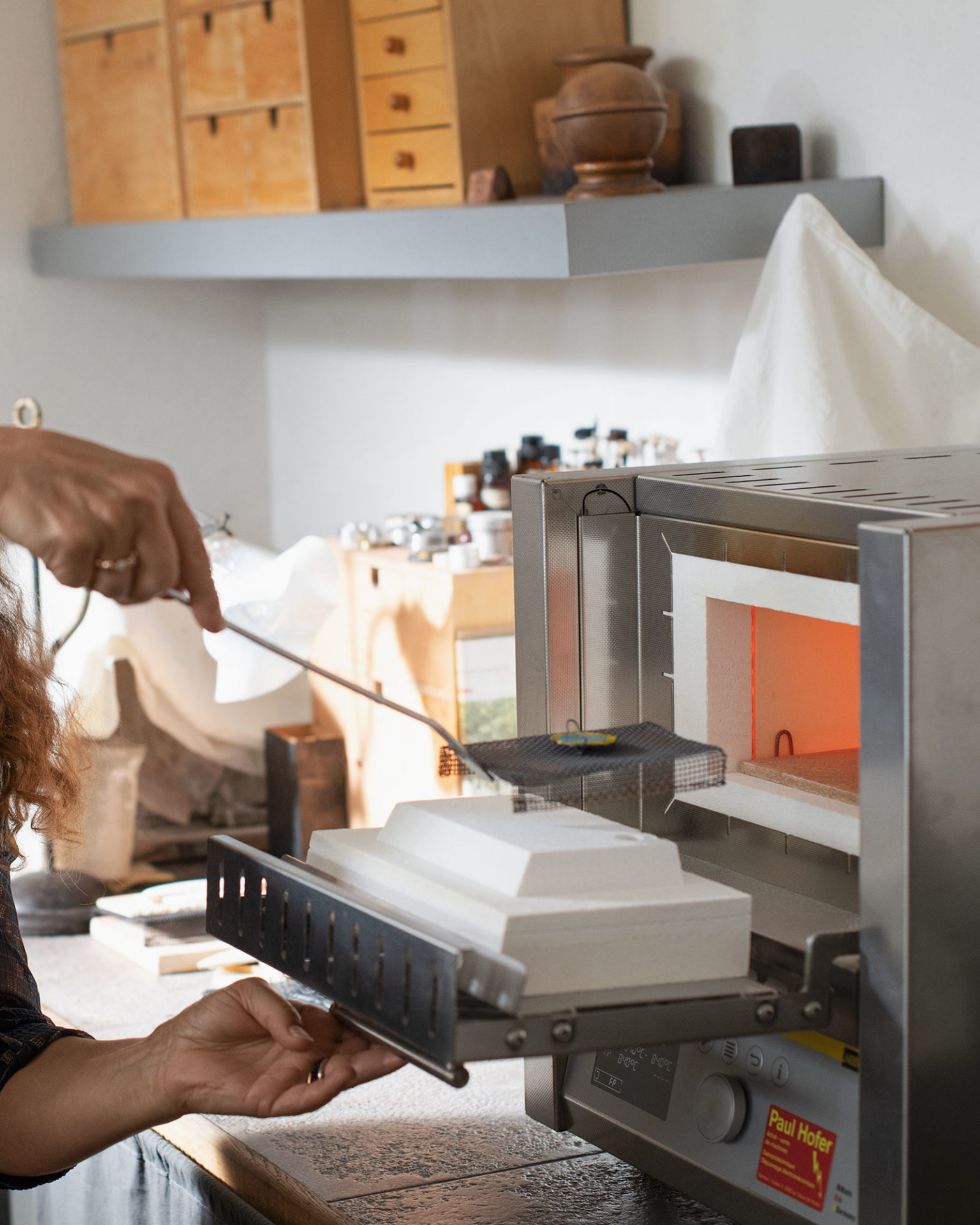
Firing the dial to set the enamel
Though this is a centuries-old technique, paillonné was first used in modern-day watchmaking by Jaquet Droz, who recruited Ms Porchet to produce the dials for its first-generation paillonné watches in the early 2000s.
While Jaquet Droz and other watchmakers generally adhered to traditional practice by arranging the paillons in orderly, geometric patterns, Audemars Piguet injected a strikingly modern style into its paillonné dials. The paillons are arranged seemingly randomly, creating a motif that is unusual in high-end enamelling.
Three dials are complete, while the two remaining dials of the five-piece limited edition can be customised by the eventual buyer, with either simpler or even more elaborate enamel decoration.
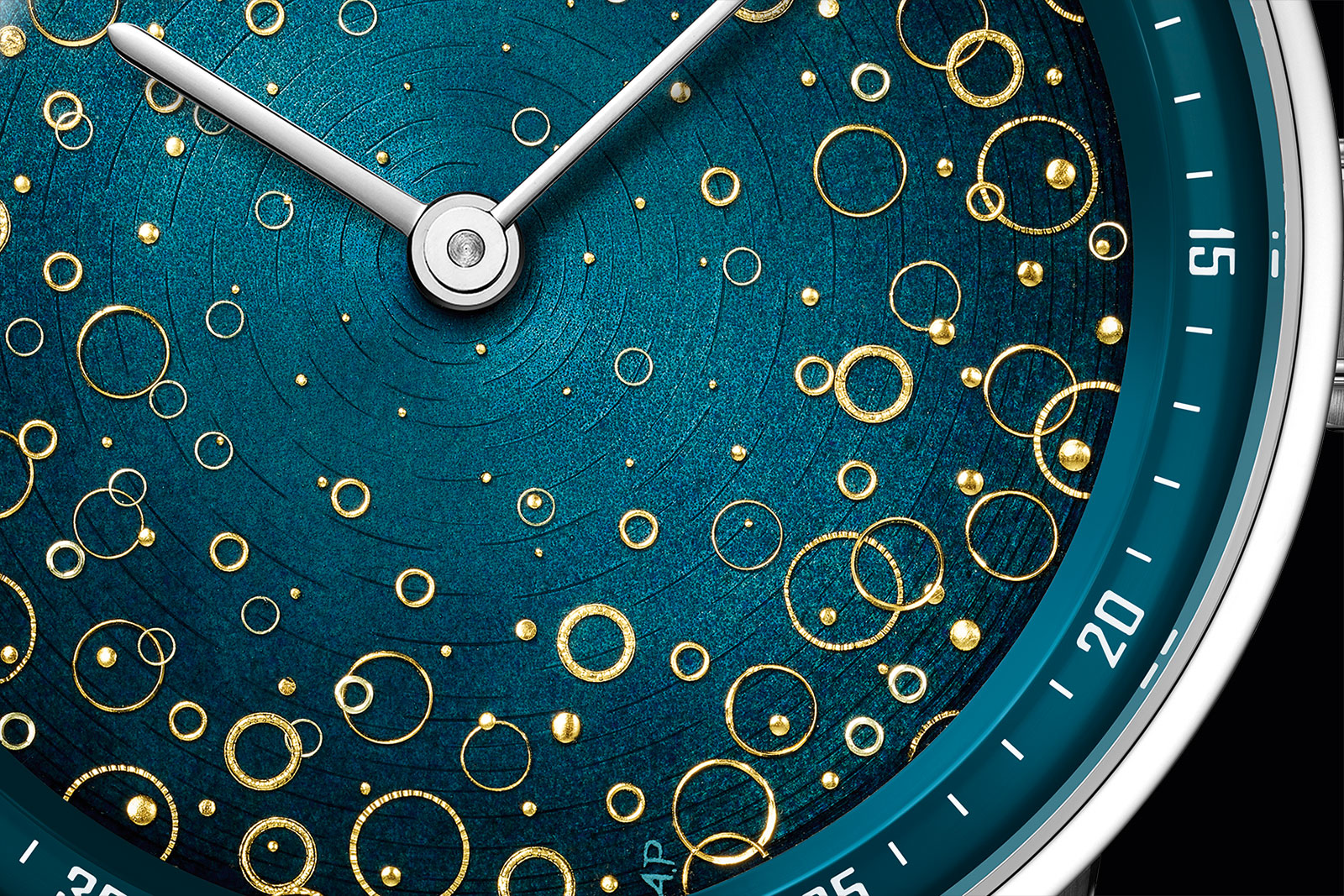
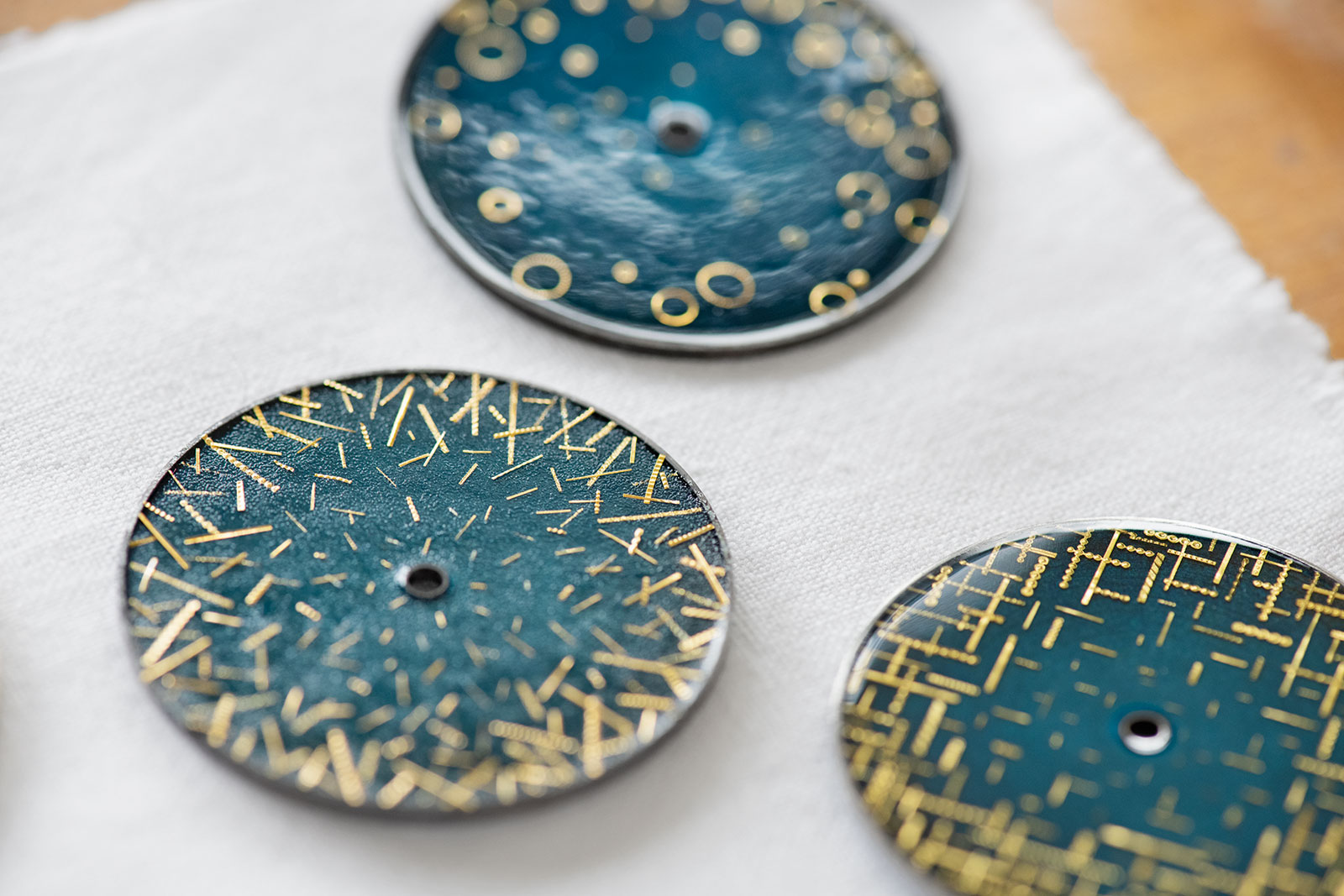
Key Facts and Price
Audemars Piguet Code 11.59 Grande Sonnerie Carillon Supersonnerie
Ref. 26397BC.OO.D002CR.01
Case diameter: 41 mm
Height: Unavailable
Material: 18k white gold
Water resistance: 20 m
Dial: Enamel, hande made by Anita Porchet
Movement: Cal. 2956
Functions: Hours, minutes, grande and petite sonnerie carillon, and minute repeater
Frequency: 21,600 beats per hour (3 Hz)
Winding: Hand wind
Power reserve: 48 hours
Strap: Alligator with folding clasp
Availability: Only at Audemars Piguet boutiques
Limited Edition: Five pieces, each with a unique dial
Price: 650,000 Swiss francs with a plain, fired enamel dial; 725,000 Swiss francs with a paillonné enamel dial (prices exclude taxes)
For more, visit audemarspiguet.com
Back to top.

